
La Racing Vie En Rose
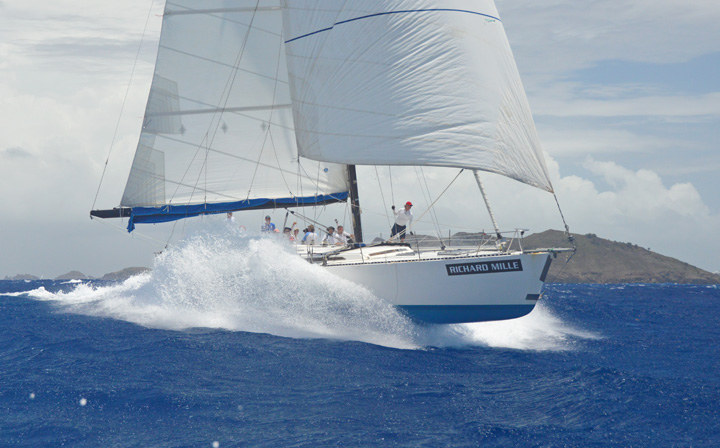
© Latitude 38 Media, LLC
The photo above, of a Santa Cruz 70 surfing a wave in 25 knots of wind, looks like a typical finish of a Transpac — except for a couple of things. First, that’s Toc Vert in the background, not Diamond Head; the Santa Cruz 70 isn’t carrying a chute; and the Transpac was last year. The photo is actually of Steve Schmidt’s Hotel California, Too, racing on the final day of last week’s four-race Voiles de St. Barth.
The former Northern Californian is the only one to have ever had a ‘cruising’ version of an SC70 built. Think a 15-foot shorter mast, an entirely different deck layout, a washer/dryer on the back porch, and four scuba tanks aft. Make that three tanks now, as mid-race one was launched across the back porch, had its head knocked off near the propane tank, and jumped into the water spewing air. Flying just a full Dacron main and Dacron 135 reacher, Hotel California, Too hit 22 knots, the short-rigged boat’s all-time best speed. Santa Cruz 70s don’t rate well in the Caribbean, particularly in the light air that was prevalent in the first two races. It blew in the mid-20s for the last two races. In fact, the third race was postponed because there was so much wind that one of the seven Melges 24s hit 21 knots without even trying. Hotel liked the breeze, easily correcting out first in the last race to take second in class behind a much better-rated boat.
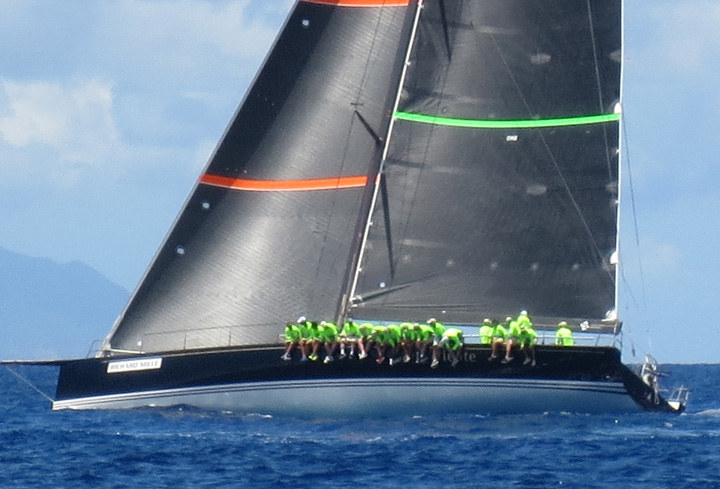
©2014 Latitude 38 Media, LLC
The fifth edition of the Voiles de St. Barth was perhaps the best ever, with a near-capacity fleet of 68 boats, including eight maxis. The most stunning-looking was Hap Fauth’s rocket-fast JV 72 Bella Mente from Minneapolis, which had carbon black sails and fluorescent green and orange racing stripes. Her crew was decked out in lemon-yellow shirts for the first race. Wild. Alas, she dismasted at the starting line of the third race.
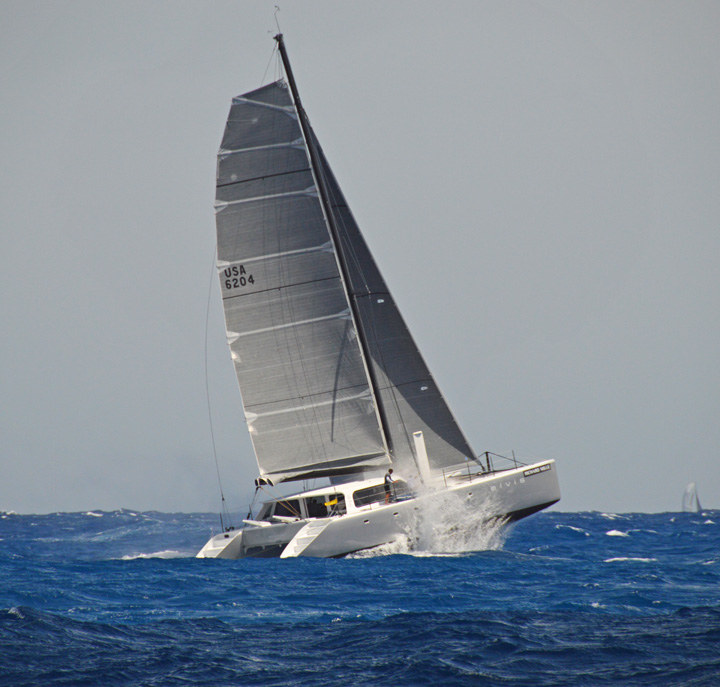
©2014 Latitude 38 Media, LLC
There was a strong but diverse multihull class, with San Franciscan Peter Aschenbrenner’s Irens 63 trimaran Paradox finishing first each day, but unable to correct out. The fastest ‘cruising’ multihull was Scott Bradford’s Gunboat 62 Elvis, which hit 28 knots off the wind. Her captain also reported that she nearly flipped when there were mainsheet problems rounding a mark. "We were standing on the near-vertical saloon windows, and I was sure she was going over." But she didn’t. No Gunboat has flipped yet. The class was won by an unnamed SeaCart 26 trimaran. Brave fellows those.
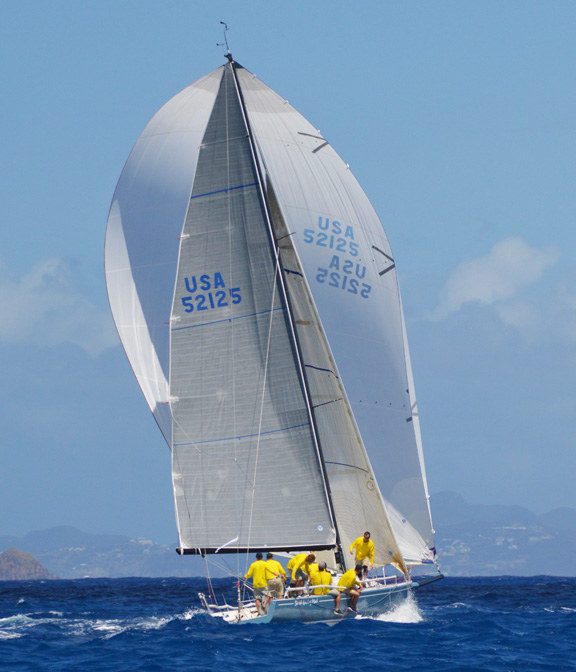
©2014 Latitude 38 Media, LLC
A class winner with West Coast ties was serial boat owner/racer Jim Madden with the J/125 Stark Raving Mad IV. A member of the San Diego YC, the Newport Harbor YC, and the New York YC, among others, Madden came on strong with bullets in the last two heavy-air races to nip Lazy Dog, a Melges 32 sailed by a fine crew from the Caribbean.
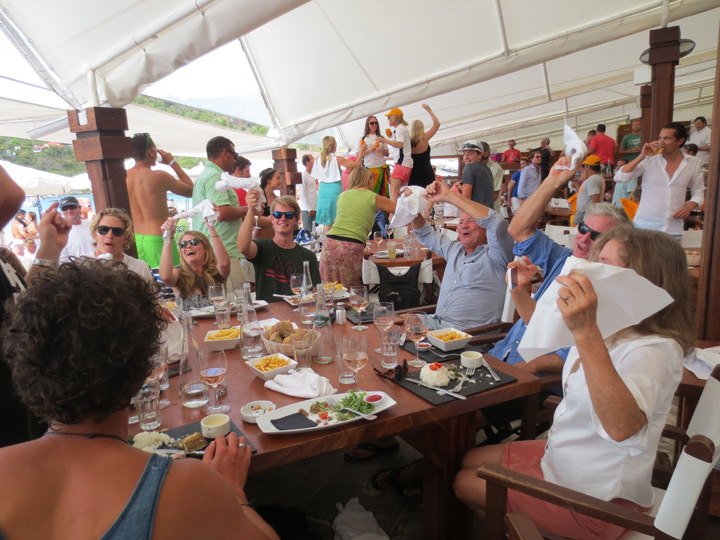
© Latitude 38 Media, LLC
It’s hardcore racing at the Voiles, and hardcore partying, too. The big Wednesday night crew party on Shell Beach was followed by the big lay day shindig at Nikki Beach. Boat owner credit cards were punished by piles of sashimi and countless bottles of rosé and Champagne. Yes, there was lots of dancing on tables. The one injury was to a crew from the Swan 100 Varsovie, captained by Patrick Adam of Mill Valley. One of his Swedish sailors had a finger bent all the way back. Dr. Fritz Bus, one of the best small-boat sailors in the Caribbean, declared there was no permanent damage to the finger. Nor was there any permanent damage to Bus’ Melges 24, Team Island Water World, which was dismasted for the second time in three years of Voile-ing. "I’ll be back," he vowed, as did most of the winners.
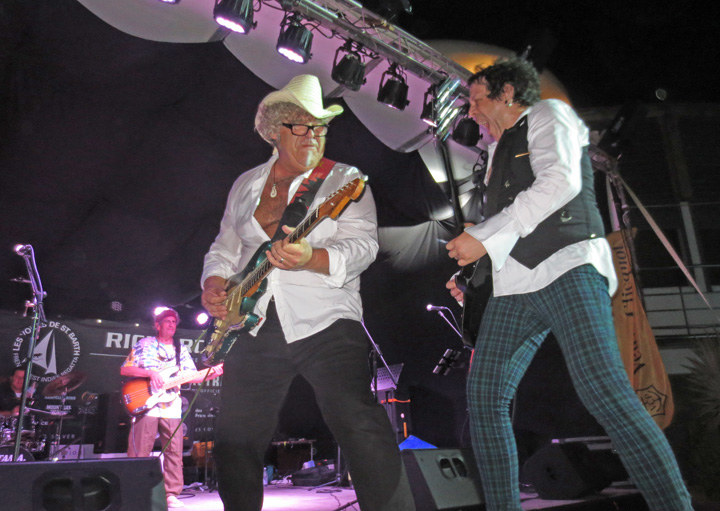
©2014 Latitude 38 Media, LLC
When it came to nighttime entertainment on the quay, Voiles organizers even imported The Crocs from the Bay Area. The group’s leader, Alex, is such a good friend that we don’t even know his last name. Alex first visited the island a few years ago and last year married Tin-Tin from Paris.
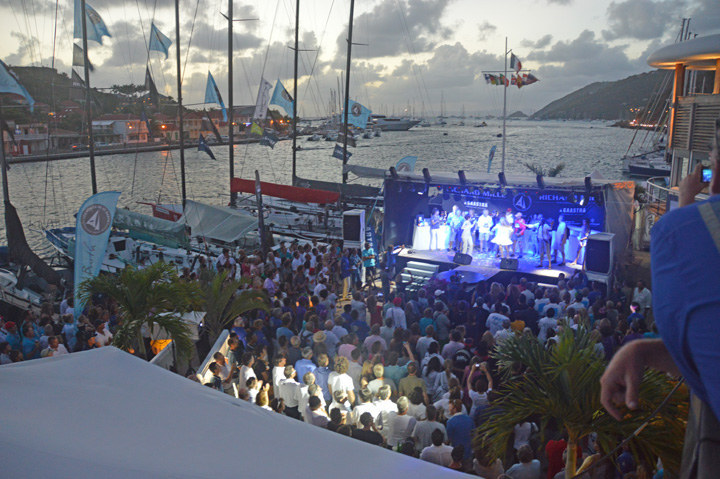
©2014 Latitude 38 Media, LLC
There are a lot of fun regattas in the Caribbean and throughout the world. But when it comes to the best mix of competitive sailing and world-class partying, we don’t believe the Voiles can be topped. The good news for half-decent sailors is that a lot of the boats, particularly in non-spinnaker divisions, are looking for crew. That’s right, if you were a half-decent sailor, you almost certainly could have been aboard Hotel California, Too for her 22 knots under Dacron.
Mid-Pacific Puddle Jump Report
When we meet soon-to-be South Pacific voyagers here on the West Coast, one of their big concerns is always heavy weather. But when we catch up with them several months later in Tahiti they often complain of not having had enough wind.
That’s not to say that heavy wind is an impossibility, but during the 20 years we’ve been reporting on the Pacific Puddle Jump (West Coast of the Americas to French Polynesia) most vessels have rarely reported winds over 30 knots except in some cases when crossing the Intertropical Convergence Zone (ITCZ), or doldrums, a constantly changing band of often-unsettled weather near the equator.
The following recent report from three-time Puddle Jumper Paul Moore of the San Francisco-based Ohlson 38 Romany Star is typical. He and first-time passagemaker Bonnie Wagner should be making landfall soon in French Polynesia’s Gambier Archipelago.
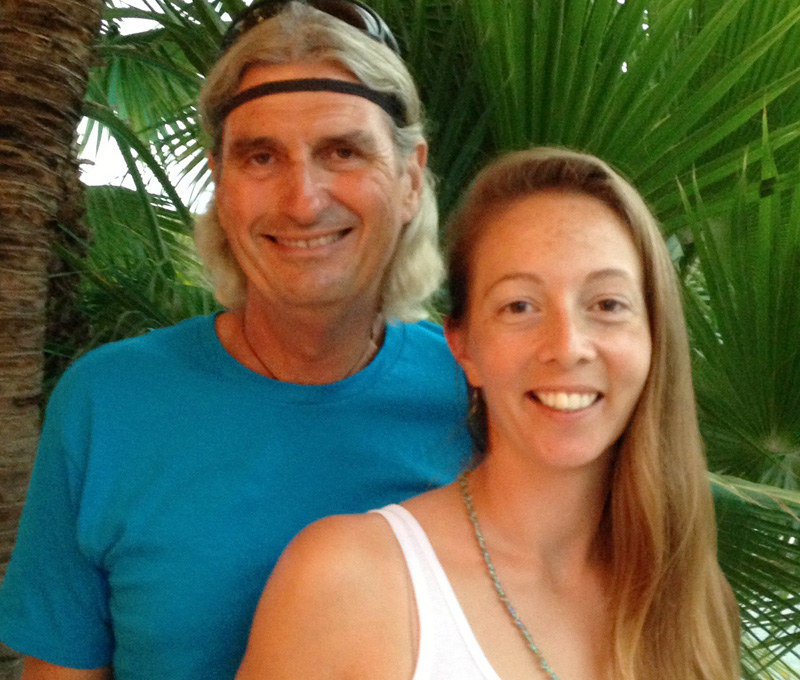
©2014 Latitude 38 Media, LLC
"The Romany Star will cross the equator in the next couple hours. Proper respect will be paid to Neptune, and the new shellback aboard (Bonnie, formerly a ‘pollywog’) will be welcomed to the club of offshore sailors that have ventured across oceans.
"The passage so far has been uneventful. There were a couple light days at the start, and the past three days have been a mix of sailing 2 to 3 knots, and motoring. Other than the light air, the ITCZ was an area of a few small squalls about 50 miles wide. The northern trade-wind sailing was glorious, with 15-20 for days.
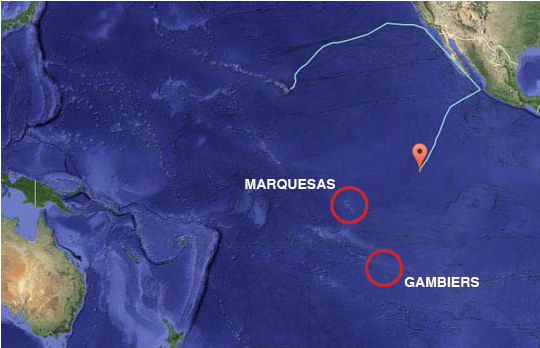
"Since we are bound for the Gambiers, we are only about half way. The crew is well rested and happy, the boat is fine. We look forward to days in a tropical anchorage, and time with cruising friends."
If you’re curious about how long Puddle Jump passages typically take, and what sort of conditions are seen, check out the archive of PPJ Recap articles on the rally’s website. Each Recap includes a fascinating table that shows boat type, the number of days it took to cross, highest wind seen, longitude chosen to cross the ITCZ, and what broke.
The bulk of the 243 PPJ boats registered this year have now departed from various ports along the West Coast, and many have made landfall in the Marquesas or Gambiers. We hope to catch up with many of them and hear about their crossings at the annual Tahiti-Moorea Sailing Rendezvous, July 4-6. Look for our reports here and in the pages of Latitude 38 magazine.
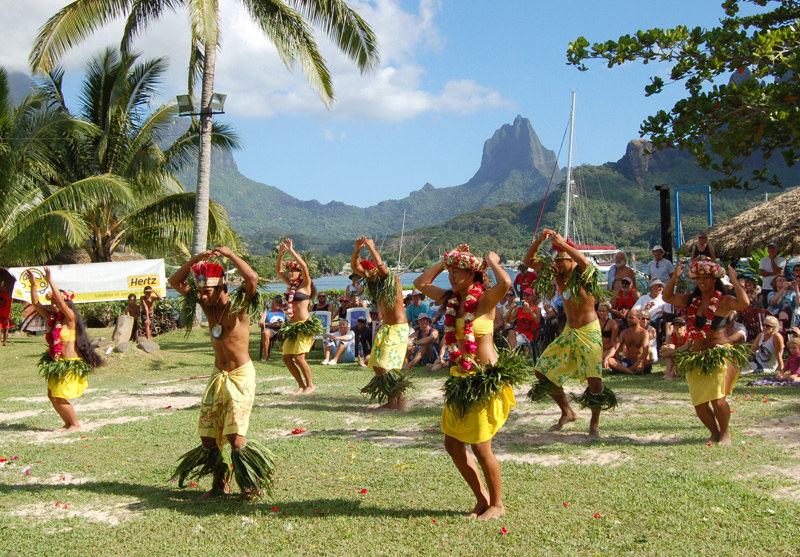
© Latitude 38 Media, LLC
